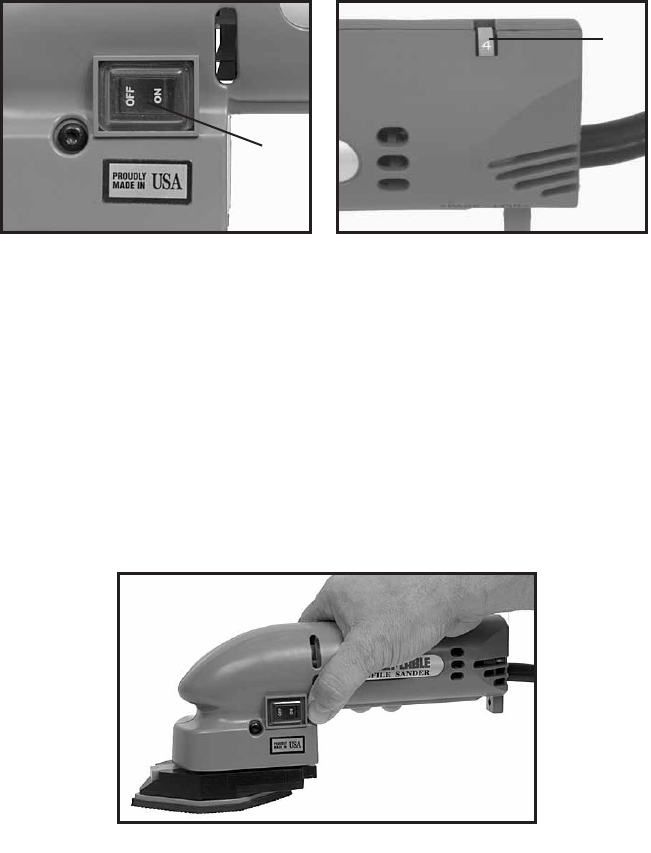
15
USING THE SANDER
The Porter-Cable Profile Sander has been designed for one-hand operation
(Fig. 16). The sander can be easily guided over the work surface with one
hand. The normal weight of the machine is sufficient for efficient sanding.
Additional pressure on the tool will slow down the speed of the pad, reduce
the sanding efficiency, and put an additional burden on the motor.
The Profile Sander uses an “in-line” sanding motion. To achieve the best
surface finish, sand “in-line” with the wood grain. Faster removal rates can
be achieved by operating the sander across the grain while working out
rough areas, and then finishing by sanding with the grain.
FINE FINISHING
The action of the tool causes thousands of tiny abrasive grits to move
against the work at high speed. Each grain moves in the same direction and
at a constant speed, causing the cutting action to be uniform over the entire
pad surface. Start the work with an abrasive grit just coarse enough to
remove the high spots and excessive roughness.
Follow with a second sanding using a grit one or two grades finer. Continue
with successively finer grits until the desired finish is obtained. DO NOT GO
FROM A COARSE GRIT TO A VERY FINE GRIT IN ONE STEP.
A
Fig. 15 Fig. 15A
B
Fig. 16


















